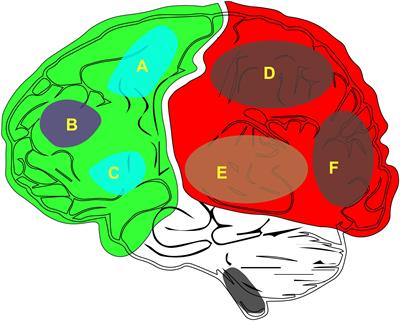Understanding Consciousness: Neurobiological Insights
核心概念
The author delves into the neurobiological aspects of consciousness, emphasizing the importance of understanding the neural networks involved in generating consciousness.
要約
Consciousness research is a complex field focusing on the neural basis of awareness. The content explores key brain regions like the paraventricular nucleus, claustrum, and posterior cortex in relation to consciousness generation. Various theories such as Global Workspace Theory, Integrated Information Theory, and Quantum Theory are discussed to shed light on the enigmatic nature of consciousness. The study highlights the significance of wakefulness and content in understanding consciousness and proposes a hypothesis regarding a fundamental neural network underlying consciousness.
要約をカスタマイズ
AI でリライト
引用を生成
原文を翻訳
他の言語に翻訳
マインドマップを作成
原文コンテンツから
原文を表示
www.frontiersin.org
Consciousness: New Concepts and Neural Networks
統計
"Neurological awareness is primarily anatomically located in the posterior cortical thermal region."
"Activation of the brain is observed near the central sulcus and back of the brain."
"Patients with epilepsy can have their state of consciousness reversed by stimulating the claustrum."
引用
"The exploration of intrinsic neurobiological mechanisms is crucial for understanding consciousness."
"Consciousness does not originate from a single brain section but globally."
"The generation of consciousness depends on a neurobiological basis."
抽出されたキーインサイト
by Zhao 場所 www.frontiersin.org 07-09-2019
https://www.frontiersin.org/articles/10.3389/fncel.2019.00302/full
深掘り質問
What implications do theories like Integrated Information Theory have for assessing non-communicative patients
Integrated Information Theory (IIT) has significant implications for assessing non-communicative patients. This theory posits that consciousness is the capacity of a system to integrate information, providing a mathematical framework to evaluate the quality and quantity of consciousness. For non-communicative patients, such as those in a vegetative state or coma, IIT offers a way to assess their level of consciousness based on the integration of information within their brain networks. By measuring the complexity and interconnectedness of neural activity in these patients, clinicians can gain insights into their conscious states even when they are unable to communicate verbally.
How might advancements in quantum theory impact our understanding of consciousness
Advancements in quantum theory have the potential to revolutionize our understanding of consciousness. Quantum theories propose that consciousness arises from quantum processes occurring at the microtubule level within neurons. These theories suggest that phenomena like anesthesia can be explained by disruptions in quantum computations within brain proteins. If further research supports these ideas, it could lead to a paradigm shift in how we perceive and study consciousness. Quantum theories may offer new insights into how subjective experiences emerge from objective neuronal activities and provide novel explanations for complex phenomena related to consciousness.
Can we truly define or quantify something as complex as consciousness through neurobiological research
Defining or quantifying something as complex as consciousness through neurobiological research poses significant challenges due to its multifaceted nature and lack of clear boundaries. While neuroscientific studies have made progress in identifying neural correlates associated with different aspects of consciousness, defining it remains elusive because it encompasses subjective experiences beyond measurable physiological parameters.
Neurobiological research can help unravel some aspects of conscious processing by studying brain regions involved in wakefulness, content generation, and arousal control; however, capturing the full essence of human experience requires integrating multiple disciplines like psychology and philosophy.
Quantifying levels or states of awareness using tools like functional MRI or EEG provides valuable data but falls short when trying to encapsulate higher-order cognitive functions linked with self-awareness or introspection.
In conclusion, while neurobiological research sheds light on certain facets of consciousness by exploring neural mechanisms underlying specific functions like attention or memory; fully defining this intricate phenomenon demands an interdisciplinary approach encompassing various theoretical frameworks alongside empirical evidence from neuroscience studies.
0
